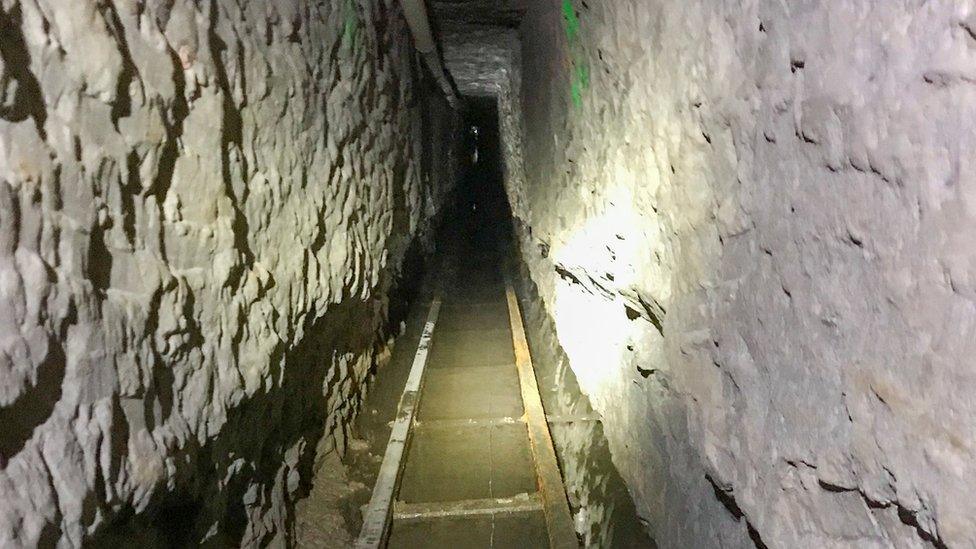Native burial sites blown up for US border wall
- Published
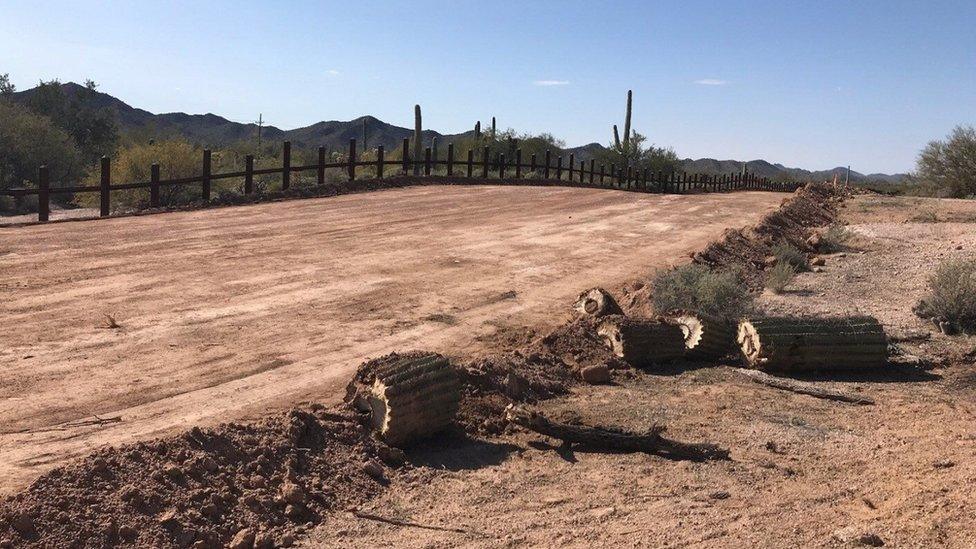
Cacti that are over 200 years old and have sacred significance have been chopped down
Native American burial sites have been blown up by construction crews building the US-Mexico border wall, says a lawmaker and tribal leaders.
Authorities confirmed that "controlled blasting" has begun at Arizona's Organ Pipe Cactus National Monument, a Unesco recognised natural reserve.
Raul Grijalva, a Democratic congressman, told the Intercept, external the destruction is "sacrilegious".
The government failed to consult the Tohono O'odham Nation, he said.
Environmental groups also warn of the damage being done to the local underground aquifer, as well as to migrating wildlife in the remote desert region about 115 miles (185km) west of Tucson.
Officials say the aim of the project is to construct a 30ft-tall (9m) steel barrier that runs for 43 miles on the national park land.
Allow X content?
This article contains content provided by X. We ask for your permission before anything is loaded, as they may be using cookies and other technologies. You may want to read X’s cookie policy, external and privacy policy, external before accepting. To view this content choose ‘accept and continue’.

What is Organ Pipe?
The United Nations designated Organ Pipe as an International Biosphere Reserve in 1976, calling it "a pristine example of an intact Sonoran Desert ecosystem".
Mr Grijalva, the chairman of the House Committee on Natural Resources, represents a district that encompasses the area, which shares 400 miles of border with Mexico.
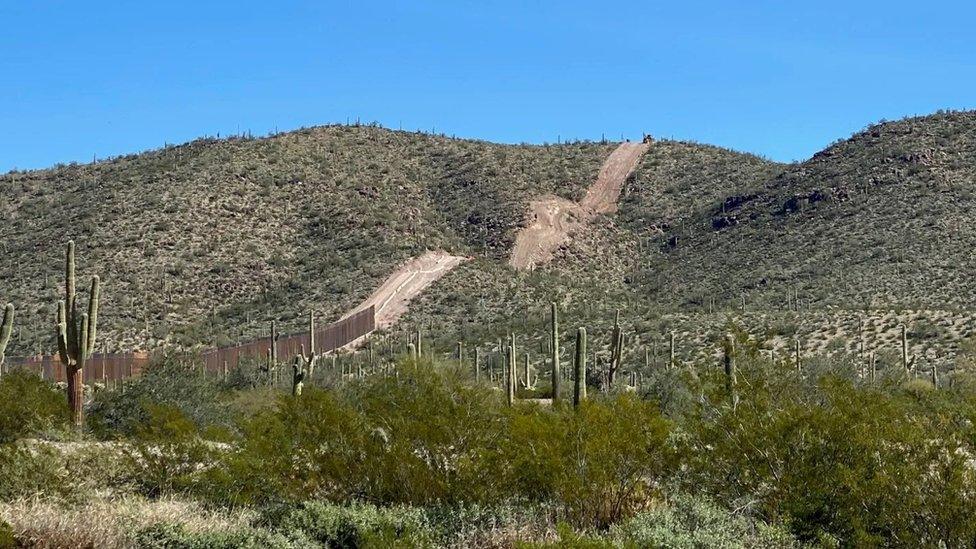
Construction on Monument Hill above saguaro cacti
He toured the burial sites at the Organ Pipe, known as Monument Hill, last month, and was told that O'odham people buried warriors from the rival Apache tribe there.
"What we saw on Monument Hill was opposing tribes who were respectfully laid to rest - that is the one being blasted with dynamite," Mr Grijalva said.

In interviews with US media, he called the Trump administration's conduct "sacrilegious" and said the environmental monitor that the government assigned to the project would do nothing to mitigate the cultural damage.
One area contained artefacts dating back 10,000 years.
Tribal chairman Ned Norris Jr told the Arizona Republic that even though the land is now controlled by the US government, "we have inhabited this area since time immemorial."
"They're our ancestors. They're our remnants of who we are as a people, throughout this whole area. And it's our obligation, it's our duty to do what is necessary to protect that."
Allow X content?
This article contains content provided by X. We ask for your permission before anything is loaded, as they may be using cookies and other technologies. You may want to read X’s cookie policy, external and privacy policy, external before accepting. To view this content choose ‘accept and continue’.

An internal report from the National Park Service obtained by the Washington Post says the border wall Mr Trump promised during his 2015 campaign would destroy up to 22 archeological sites, external within Organ Pipe alone.
Crews are reported to have also destroyed ancient saguaro cacti, which Mr Grijalva said the O'odham people see "as the embodiment of their ancestors".
"So to see them turned into mulch - it's deeply upsetting."
Is this legal?
The Trump administration has been able to build sections of the US-Mexico border wall on public land due to the 2005 REAL ID Act, which gives the federal government the right to waive laws that conflict with US national security policy.
In their bid to build the wall, the White House has waived dozens of laws, external - including ones that protected Native American graves, endangered species, and the environment.
Mr Grijalva said he will work towards repealing the 2005 act and will convene a congressional hearing in the coming weeks in an effort to do so.

You might also be interested in:
- Published7 October 2019
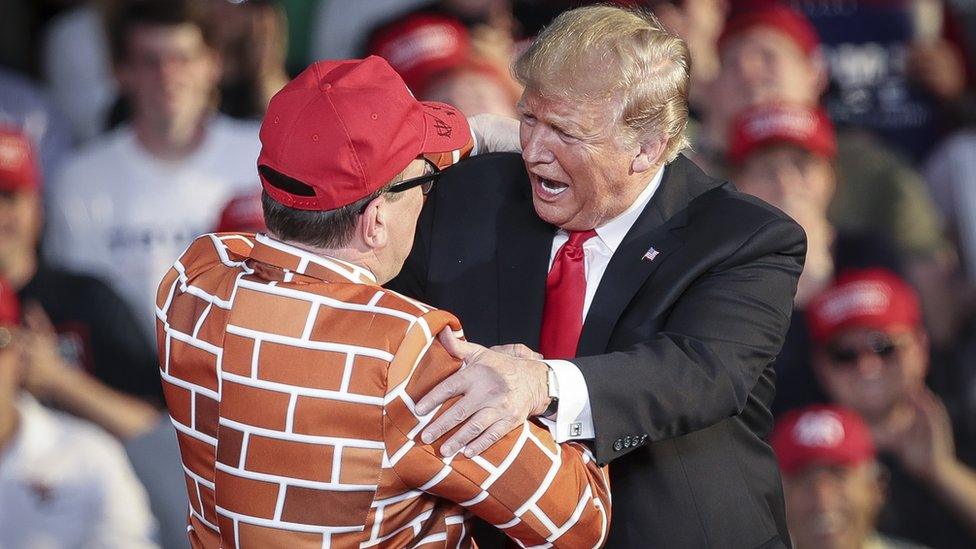
- Published30 January 2020
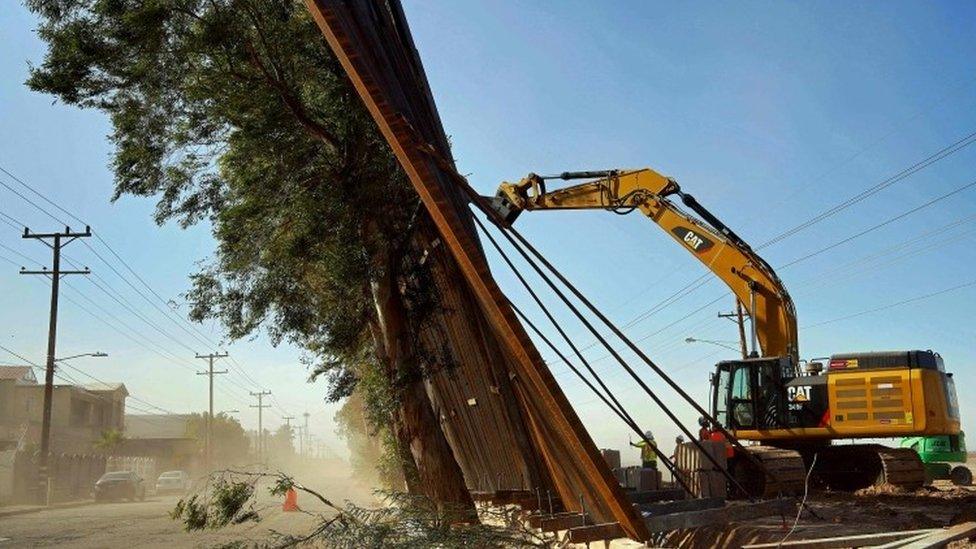
- Published31 October 2020
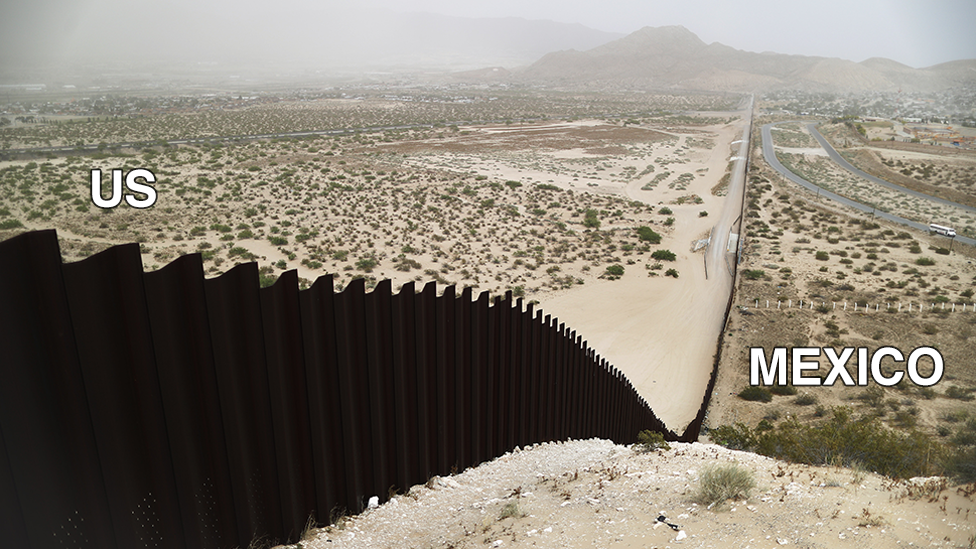
- Published30 January 2020
